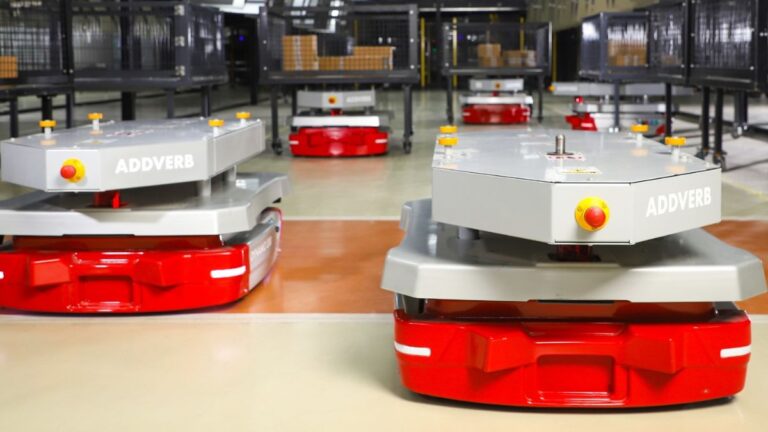India is on the brink of a technological revolution. Automation is expanding opportunities across the entire industrial value chain. Physical AI, systems that can perceive, reason, and act autonomously, is shifting automation out of predictable routines to complex and variable environments. This convergence of robotics, AI, and advanced sensors is not just reshaping factories; it is redefining the very architecture of industrial competitiveness.
For India, these have profound implications that include productivity, industrial resilience, and inclusive economic growth.
Physical AI, in contrast to traditional automation, which executes fixed, pre-programmed tasks, allows machines to learn in context, adapt to variability, and collaborate with human operators. According to Weforum’s latest research, the use of AI is projected to contribute $17–26 trillion to the economy globally within the next 10 years. India, as a nation with rich STEM skills, a developing research-based environment, and developing technological platforms, has the pillars to reap a significant portion of this value. With the growth rate of 5.7 per cent now, GDP may reach up to $6.6 trillion by 2035. As more and more advanced robotics and AI are adopted faster, India will be able to drive toward an 8 per cent growth rate, which can unlock $8.3 trillion in GDP, a 1.7 trillion increment, which represents more than just numbers but also new industries, higher-value manufacturing, and modernised services.
The future of robotics highlights the special chance for India. First-generation robots were based on fixed rules and were more effective at high-volume repetitive work. The second generation added learning algorithms that enabled adaptation with the use of simulation and reinforcement learning. The third generation of context-aware robotics is already in existence and is capable of autonomously executing unfamiliar tasks, reacting to unexpected circumstances, and combining multimodal information in making decisions. This intelligence layer enables advanced automation to be made available to the small and mid-sized manufacturers in India, enabling them to embrace smart, flexible production without necessarily having a large engineering team.
With the emergence of intelligent robotics as a niche to core competency in industrial competitiveness, the trend is moving toward faster adoption across industries, functions, and company size.
Instead of being limited to the traditional, high-volume processes, it is now spreading to dynamic processes in manufacturing and logistics. This is not only a matter of technological maturity, but also a strategic opportunity: Indian industries can use intelligence to enhance efficiency, resilience, and agility, which will benefit the economy of the country as a whole.
The influence of physical AI on the way industrial processes are carried out is already visible. Adaptive robotics, automated quality inspection and force-sensitive assembly can be used to manufacture lines more quickly and with greater precision.
Autonomous material handling, optimisation of the warehouse, and AI-controlled inventory management can be used in logistics hubs to minimise bottlenecks and operational costs. Such applications directly translate to increased productivity, efficiency in the supply chain and shorter delivery cycles, in line with the vision of India to emerge as a global competitive industrial hub.
Domestic capability is critical to the capture of these gains. India should create its own Physical AI ecosystem, which is a combination of robotics hardware, AI software, and advanced sensors that are adapted to local conditions. Local innovation will help decrease reliance on imports, enhance strategic independence, and make India a world leader in terms of implementing smart industrial systems. Through research, startups, and facilitating collaboration between academia and industry, the country can transform innovation into real growth and competitiveness.
The labour market revolution that comes along with Physical AI is also notable. Automation is not going to replace employees; it will transform jobs. The intelligent systems will be maintained by technicians, the engineers will design and optimise the processes based on AI, and the operators will control the human-machine interaction.
Aligning education and reskilling programs to these new roles ensures that India’s demographic dividend is fully leveraged, creating high-value employment while supporting industrial expansion.
Physical AI is more than a technological shift; it’s a strategic lever for India. Its adoption can reshape industries, create new jobs, and position the country as a global economic leader.
The decisions made today around investment, policy, and skill development will determine whether India shapes this transformation or merely follows it. By embracing Physical AI thoughtfully, India can move from being a user of intelligent systems to an architect of them, building a productive, resilient, and inclusive industrial future.
The writer is principal scientist (advanced robotics) at Addverb Technologies, a Noida-based global robotics company.
The opinions expressed in this article are those of the author and do not purport to reflect the opinions or views of THE WEEK.
Images are for reference only.Images and contents gathered automatic from google or 3rd party sources.All rights on the images and contents are with their legal original owners.

